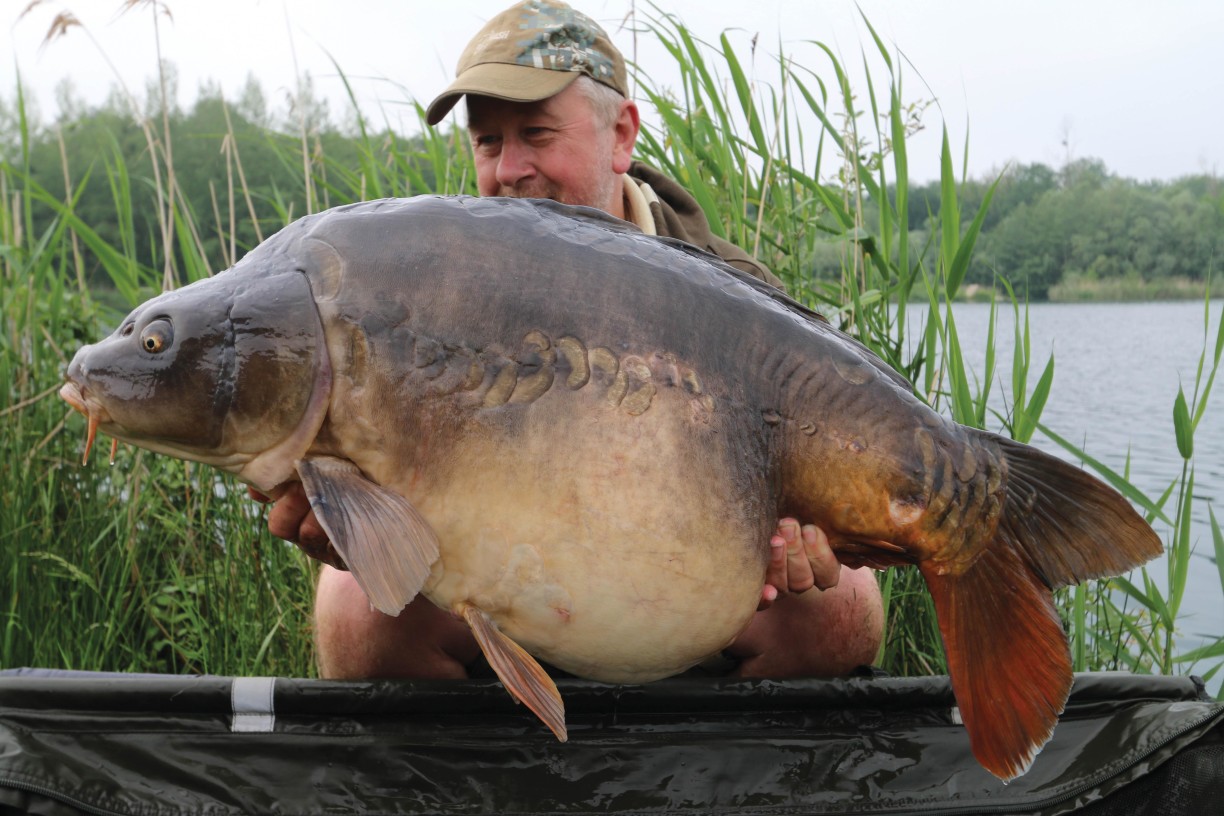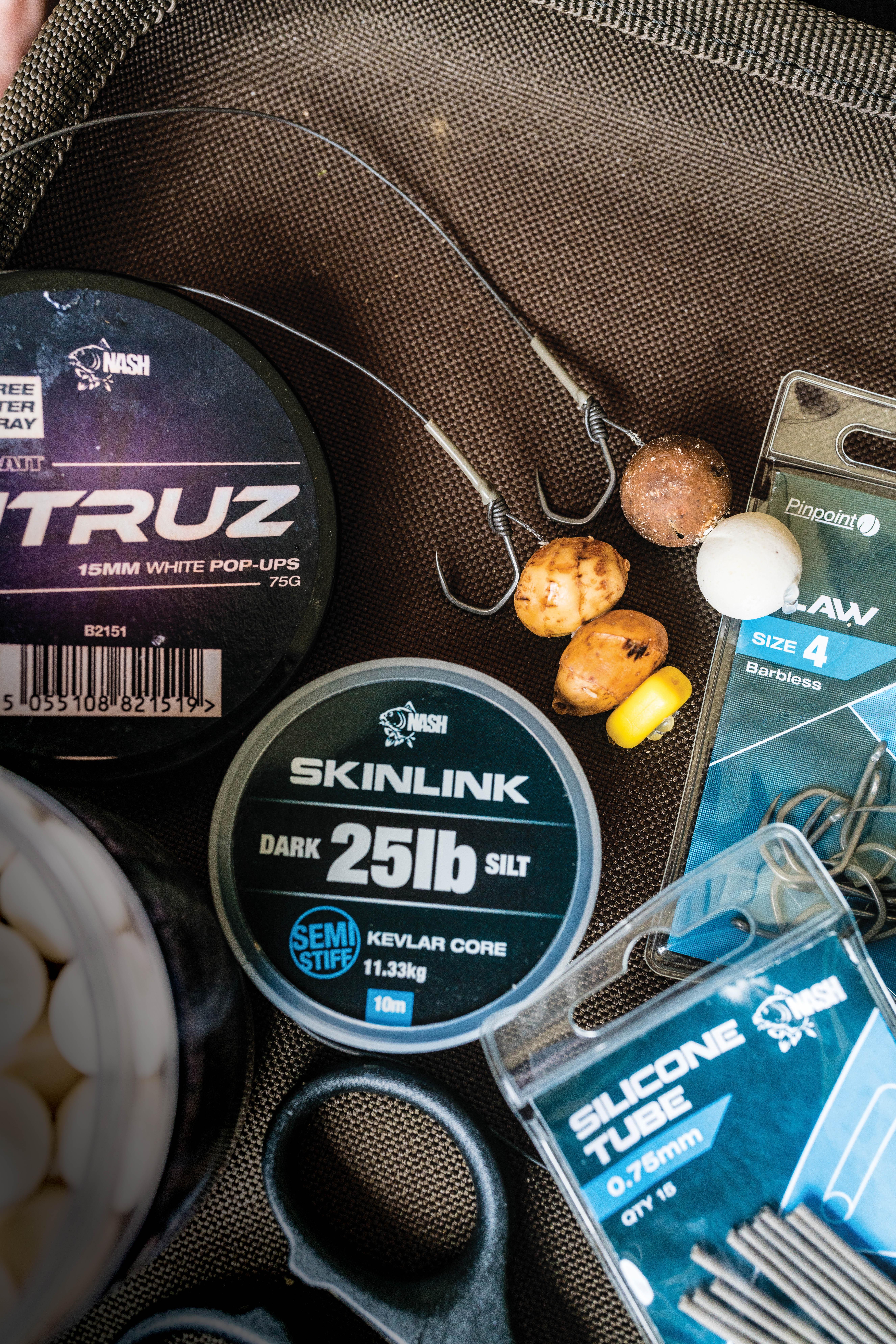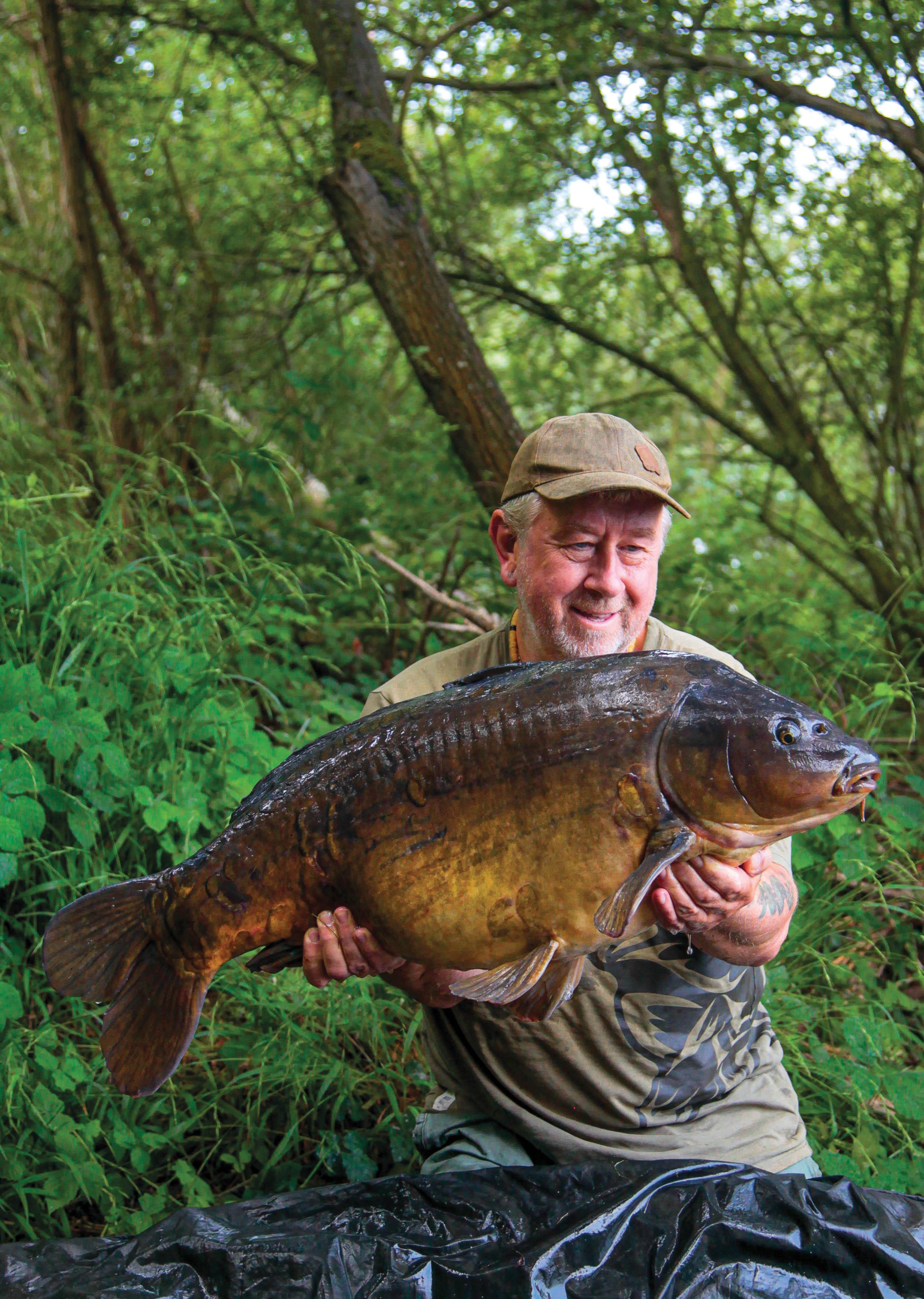End Tackle According To... Steve Briggs
If at all possible, Steve likes to keep things simple. That’s certainly the case when it comes to what he sticks on the end…

There was never really a game-changing, light bulb moment that altered everything for me, rig-wise, but there have been many incidents that have seen me change my thinking, and indeed my rigs. Way back in the 1980s at Darenth, I was at the stage where I was trying everything, but wasn’t really confident in anything. Mostly, I was using longish Hairs, believing that the carp would be spooked if they felt the hook or the hooklength. I was fishing with Pete Noonan, and he had his hook right up against his bait, his Hair being almost non-existent. He was catching a lot more than me, and the penny eventually dropped that the important thing was to get the hook into the carp’s mouth as soon as possible. With that sorted, I started catching more myself, and although it was a long time ago, I still have the same view today.
Using the Hinge Rig with pop-ups certainly upped my catch rate. It was the early ’90s when I first used it at Harefield, but it is still the rig I go-to 95 per cent of the time if I want to use pop-ups. I can remember it looking like such a strange rig when I first tied it up, but it works so well in terms of both presentation and just catching fish. I’ve no idea how many carp I’ve landed on it during the 30 years since, but it still works just as well now as it did back then, so there is no reason to fix what ain’t broke!
The last rig-related item I bought and loved was a Nash Pinpoint Hook Doctor. I must admit that at first I was dubious. I hadn’t sharpened hooks for years, my thinking being that I would rather just change rigs and put on a new hook, rather than spend time trying to sharpen an old one. That all changed at one of the carp shows when Henry Lennon demonstrated hook sharpening on the Nash stand. He passed me a hook and asked me what I thought, and I have to say I thought it was really sharp. That, though, wasn’t the point—no pun intended. I’m happy with my hooks, but these days the points are quite brittle. Despite the best will in the world, I know there have been times when, in the middle of the night after I’ve landed a fish, a hook will have lost its sharpness, but also that I just couldn’t be bothered to sit there and tie a new rig. I’ve just cast a blunt hook back out and cursed my laziness the next day. Using the Hook Doctor, within a few seconds I can have the hook as good as new, and that means I’m angling better.
On my wish list for a future end-tackle item would be hooks that retain their sharpness for longer. I know hooks have got better and better over the years, but I’d love to hardly have to change them—perhaps that’s just my laziness coming out!
To be honest, no one and everyone influences me when it comes to rigs. The good thing about having been in the carp game a long time is that I’ve come through that stage of rig confusion and uncertainty. I have settled on a few different set-ups that work for me and I don’t change much. I’m always interested in what other people do, though, and interested too, to see what works in different situations. I guess the biggest influence in the last few years has been Alan Blair with the Slip D-Rig. I now use it a lot, and that’s mainly down to Alan and his success.
I have an excessive collection of almost everything! This week, I’ve been clearing out my shed and I’ve got rig-related items going back over forty years, along with all sorts of other gear that I probably won’t ever use again. I don’t need the stuff, but feel guilty when it comes to throwing it out—perhaps I should seek help!

Where are we heading regarding rig innovation at the moment? Hmm, I don’t think there has been any real rig innovation for a long time. Lots of people try to put a new slant on things, but most of the time it’s a reinvention of an old idea. I guess the Chod Rig was the last major ‘thing’. I hate the set-up and would never use it, but I would also never deny how many fish have been caught on the rig over the years. Even that, though, was just a refinement of a rig designed a long time ago for fishing the silty meres. It’s hard to see where else we could go. I’m not an inventive person, as such, but plenty of anglers out there are, so it’s always possible that something might come along that will change everything as we know it.
To see the effect any rig change makes, you really need some action. I remember fishing a well-stocked lake in Hungary, and I had three rods out. Two had my usual, coated-braid rigs with about an inch of the coating stripped at the hook end, and the other set-up had the coating left intact. The rod with the coating intact kept going off, so I swapped a second rod over and that started going off, too. In the end, I changed all three to lengths of un-stripped coated braid, and without a doubt, it made a big difference to the number of runs. They must have been getting away with it whilst I used the stripped sections. To my mind, the stripped version should’ve been better, as it allows more freedom of movement, but in practice, it was nowhere near as good. It was only just recently that I started to strip a section again, but that’s only because I now use a stiffer coated braid.
My preferred hooklink length for normal bottom-bait type rigs is around 9 or 10 inches. People have told me that they think that this is a little bit long, but I’ve had more problems when using shorter hooklengths than I have longer ones, in terms of dropped takes or fish being hooked just in the edge of their lips. I’ve caught on rigs that were 3ft in length, and I have used really short rigs when fishing PVA bags, so if it’s called for, I will adapt accordingly, but that’s not very often.

When it comes to hooklink materials, I favour coated braids. Most recently I’ve been using Nash Skinlink, but the stiff version as I like the presentation that this facilitates. I like the strength-to-diameter ratio that coated braids offer, and I always feel safe using them. For my Hinge Rigs I use a stiff, 20lb fluorocarbon hook section, but mostly Skinlink for the boom.
When it comes to how I mount my hookbait, it depends on the set-up I’m using. If it’s a Slip D-Rig with bottom-bait or Snowman set-up, then I’ll use a braided Hair attached to a micro ring swivel on the ‘D’. Some think that using the swivel is a case of overkill, and although I’m normally one to keep things on the simple side, I’ve tried it both with and without the swivel, and the rig just seems to act and work better with it in place.
For pop-ups on the Hinge Rig, I now use a plastic bait screw. I used to tie them on with dental floss, but that was both fiddly and time-consuming. Also, with a glugged bait I didn’t want to handle it much before I cast it out, so the bait screw makes the whole operation quicker and easier.
When it comes to hookbait choice, I believe mainly in keeping things as simple as possible. For the most part, I will use a Snowman Rig or bottom-bait set-up with baits straight out of the bag. I’m a big believer in using roughly the same on the rig as what I’m putting out as freebies, as my view is why would I stick a hundred boilies out there for the fish to eat, only then to use something else on the hook? Throughout the whole year, I use just two different boilies: Scopex Squid in the spring, summer and autumn, and Citruz in the winter. These will be my hookbaits, too.
I see end-tackle products becoming more and more refined, thinner, sharper, and generally getting better as time goes on. Companies now have teams of people working to improve every type of tackle, with an aim to increase their share of a crowded market. These days, if items don’t make the grade, they’re quickly binned, because word soon gets around as to what’s good and what isn’t. The angling community continues to demand new and improved items—even if they do complain about the price!



